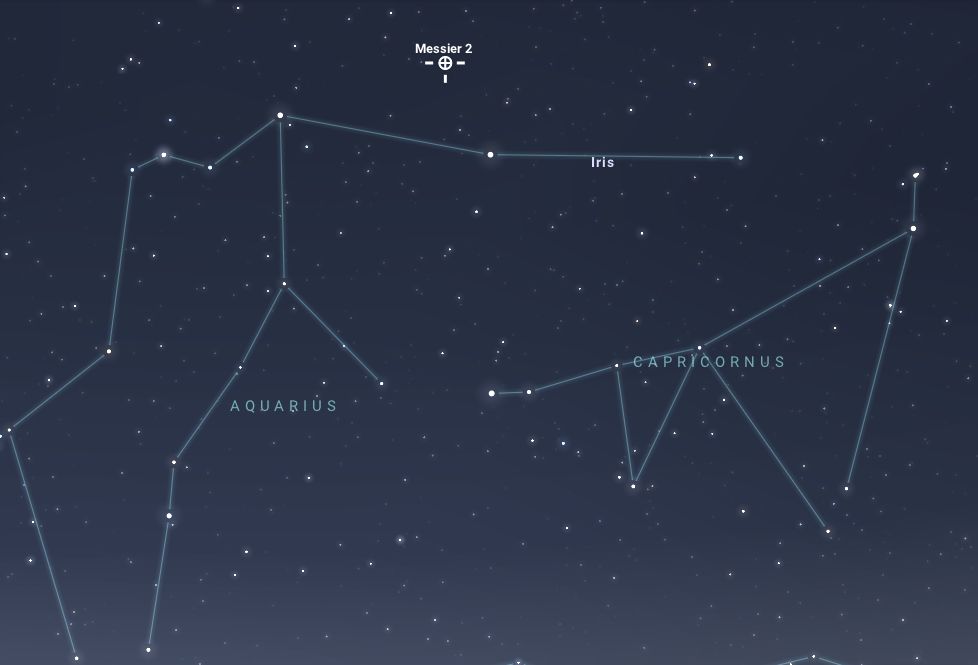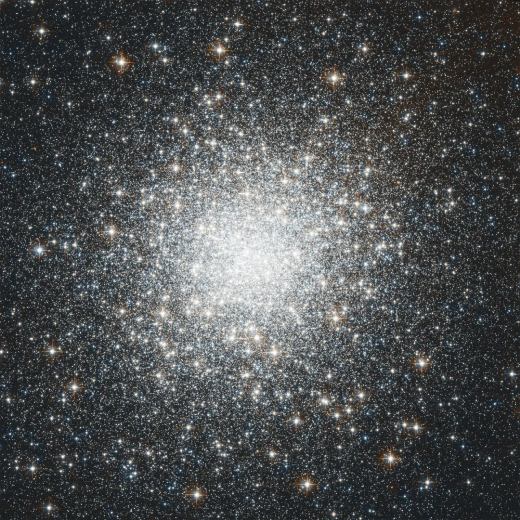M2, also known as Messier 2, is a prominent globular cluster located in the constellation Aquarius. Globular clusters are dense, spherical collections of stars held together by gravity, typically containing thousands to millions of stars. Among the roughly 150 known globular clusters in the Milky Way galaxy, M2 stands out as one of the largest and brightest, making it a notable object for both amateur and professional astronomers.
The cluster was first discovered in 1746 by the French astronomer Jean-Dominique Maraldi during his observations of a comet. Nearly three decades later, it was included in Charles Messier’s catalogue of celestial objects, earning its designation as Messier 2, the second entry in this famous list.
Physical Characteristics
M2 is estimated to be approximately 13 billion years old, making it one of the oldest globular clusters in the galaxy. Located at a distance of about 55,000 light-years from Earth, it has an impressive diameter of 175 light-years, encompassing a vast collection of stars. These stars are densely packed, with the cluster’s core being particularly concentrated.
The stars in M2, like those in most globular clusters, are predominantly metal-poor, meaning they have low abundances of elements heavier than helium. This composition indicates their formation occurred early in the galaxy’s history, before heavier elements became more common. M2 orbits the galactic centre of the Milky Way in a highly elliptical path, held together by its own gravitational forces, with its stars moving in complex orbits around the cluster’s centre of mass.

Visual Appearance
The apparent magnitude of M2 is approximately 6.3, meaning it is barely visible to the naked eye under ideal dark-sky conditions. For a clearer view, binoculars or a telescope are recommended. When viewed with binoculars, M2 appears as a faint, hazy patch of light. Through a small telescope, its dense core becomes more distinct, while a larger telescope can resolve individual stars, showcasing the cluster’s tightly packed core surrounded by a halo of fainter stars.
The cluster’s striking appearance and high brightness make it a favourite among amateur astronomers, especially when observed from locations with minimal light pollution.
Scientific Interest
Globular clusters like M2 are of significant interest to astronomers because they serve as natural laboratories for studying the formation and evolution of galaxies. The ages and compositions of the stars within globular clusters help scientists better understand the early stages of the universe. Additionally, these clusters provide insights into stellar dynamics, as their dense populations allow astronomers to study interactions between stars in extreme environments.
Observation
M2 is best observed between August and December, with peak visibility occurring in October and November. During this time, the cluster reaches its highest point in the night sky, particularly in the Northern Hemisphere, where it is prominently visible. Under clear and dark skies, it becomes an excellent target for stargazers equipped with binoculars or telescopes.
In the Southern Hemisphere, M2 is also visible during these months, although it appears lower on the northern horizon. The best time to observe M2 is during October evenings, when it is highest in the sky, ensuring optimal clarity and stability for viewing. Its location near the celestial equator makes it accessible to observers in both hemispheres.




